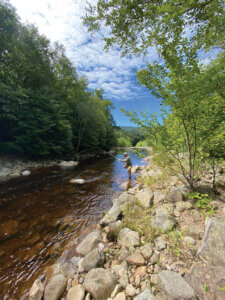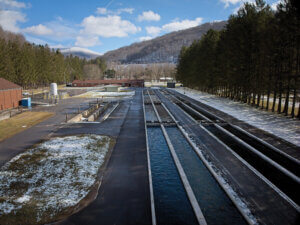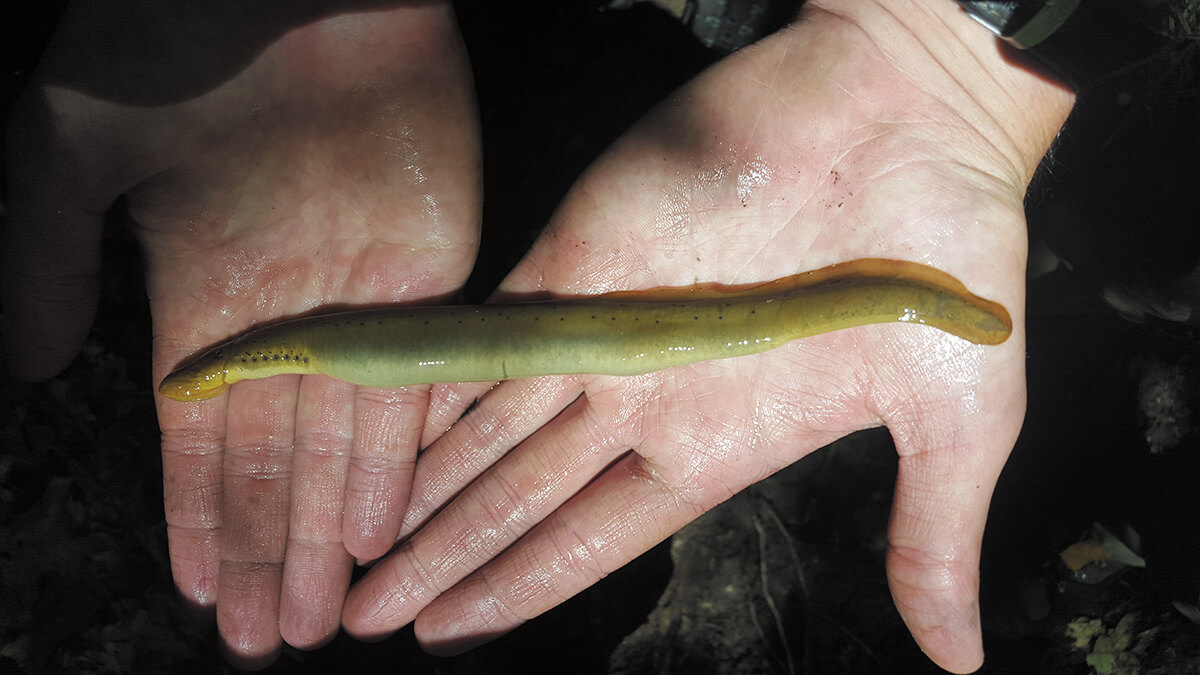
A look at some of West Virginia’s lesser-known fish species.
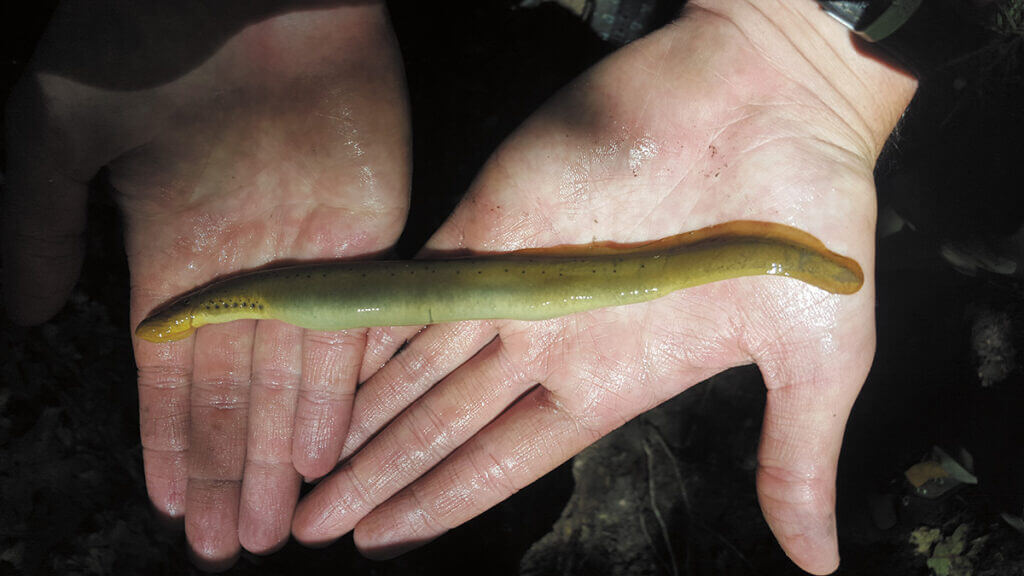
This story was originally published in the May 2018 issue of Wonderful West Virginia magazine. To subscribe, visit wonderfulwv.com.
Written by Wendy Holdren
Dan Cincotta knows his fish. He even has a species named after him. The Crystallaria cincotta—or diamond darter—is a freshwater fish known for the diamond-like reflections that emanate from its body when exposed to light. Found only in the Kanawha County section of the Elk River, these translucent, speckled fish are only the second known member of their genus, which also includes the crystal darter.
Dr. Stuart Welsh, assistant leader of the Cooperative Fish and Wildlife Research Unit at West Virginia University, officially described the fish in 2008. He named it after Cincotta in recognition of his 40 years of service protecting West Virginia streams.
Including the diamond darter, West Virginia is home to around 190 species of fish, either introduced or native. And now that Cincotta is the senior ichthyologist—studier of fish—at the state Division of Natural Resources’ Wildlife Diversity Unit, he and Welsh are co-authoring an atlas and identification guide for West Virginia fishes.
Wonderful West Virginia asked Cincotta to select a few of his favorites to highlight below.

Paddlefish
Described by Cincotta as “odd-looking prehistoric critters,” the paddlefish haven’t evolved much since their earliest fossil records 300 million years ago. Found in large rivers, paddlefish filter feed on microscopic plants and animals in large pools, locating the food using electroreceptors stored in their paddles. These fish are found on the Ohio River Valley side of the state.

The paddlefish’s habitat was damaged as dams were installed to make rivers easier to navigate. “They like the gravel and rocky shoals near riffles to spawn. Riffles are that tumbling area you see in a stream, where there’s a quick drop in elevation. But navigation rivers are flat water,” Cincotta says.
The state now stocks paddlefish to bolster their populations. Cincotta says he’s not sure if the stocked fish are spawning yet, since the species reaches sexual maturation at a late age—around seven years for males and around 10 years for females.
Sturgeon
With large, bony plates on their sides, the sturgeon is also a prehistoric-looking fish with primitive scales and a shark-like tail. “Those two, the paddlefish and sturgeon, are the most primitive bony fishes in North America,” Cincotta says.
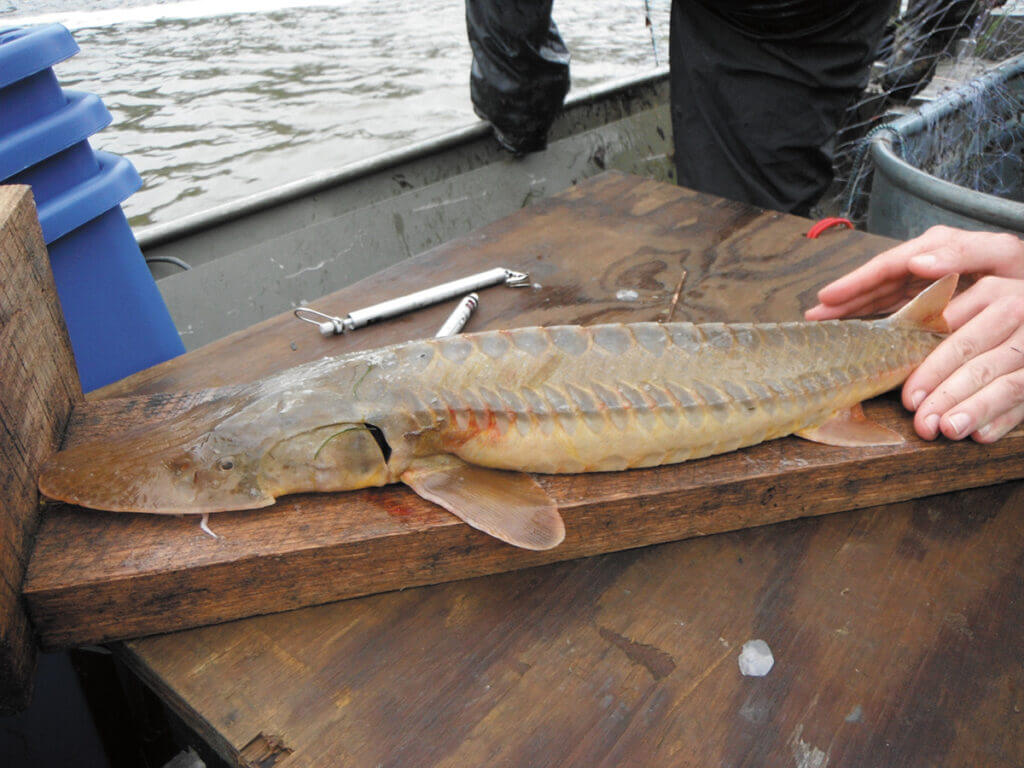
Worldwide, there are 26 species of sturgeon, but because of loss of habitat—gravel and rocky shoals, just like the paddlefish—numbers in West Virginia aren’t so great. “Sometimes they skip years spawning, and it takes them many years to initially spawn,” Cincotta says.
Other states have had little luck finding eggs or young sturgeon, too. But if they begin spawning, they will be around for quite some time. Some sturgeon live to be 100 years old.
Candy darter
“These fish are disappearing in West Virginia,” Cincotta says. “They’re probably one of the most colorful fish in the state.”

Male candy darters are distinctly colored, with roughly 10 vertical blue-green bars, which are bordered by narrow, bright red bars. A large red patch can be found on their cheeks. These small, short-lived fish have a lifespan of up to three or four years. They are found only in the Gauley and Greenbrier rivers of West Virginia and in New River tributaries in Virginia.
Candy darters are mating with the less colorful variegate darter, a non-native species somehow introduced into the candy darter’s waters. This hybridization of the two species is resulting in less-colorful offspring. Cincotta says candy darters will likely disappear within the next 30 years unless a conservation plan is enacted.
Lampreys
The first-known fishes were jawless, like West Virginia lampreys, which have toothed, sucking disks as adults.
During their larval stage, the fish have flaps around their mouths. They bury in the sand and filter feed for several years, then transform into adults.

Sometimes called “mud eels,” Cincotta says some species of lamprey are parasitic. They are known to attack paddlefish. There are about 40 known species of lampreys. West Virginia has six, and all are located on the Ohio River side of the Appalachian Mountains.
As the fish mature, they spawn once and then they die. One group, the brook lamprey, do not eat as adults. Cincotta says they only survive long enough to make nests and spawn. “They can’t take any food from a host because their teeth are lacking. They have to go and make their nests within a short period of time. They’re one-time spawners, too.”
American Eel
The American eel lives in freshwater, but goes to the ocean to spawn. Once considered for listing as an endangered species, American eels face many barriers, such as dams and impediments, to get to and from the ocean. “They’re capable of getting over barriers, but some of them don’t,” Cincotta says. “And a lot of them are harvested for eating purposes.”

When the American eel first hatches in the Atlantic Ocean, Cincotta says they’re a small, ribbon-like, transparent larvae. Then they go through a “glass eel” stage where they look like snakes.”You can still see through them, and the currents take them back to the coast. They’re common on the east coast. They also make their way to the Gulf of Mexico, then the Mississippi River,” he says.
After the glass eel stage, they reach the elver stage, when they receive 40 percent of their oxygen through their skin. By this young adult stage, the eels can slither over and around dams.
Next comes the adult yellow eel phase. It can take up to 12 years for American eels to sexually mature. Eventually, over many years, the females become fat and silvery and prepare for the trip back to the ocean to spawn. Males, which generally do not move as far inland, become mature and also migrate out to sea to spawn.
American eels can be found on both sides of the Appalachian Mountains, but are more commonly spotted in the Potomac River. They have also been found above Kanawha Falls.

Longnose Gar
The longnose gar is yet another prehistoric fish found in West Virginia’s waters. This fish, which has fossil ancestors going back 150 million years, is found in the Ohio River basin. In addition to gills, gar have a gas bladder that acts as a lung allowing them to breathe air if there’s not enough oxygen in the water. “They’re able to cope with just about any type of environment,” Cincotta says.
Young gar grow quickly, measuring up to 20 inches after their first year. That growth slows as they get older but, by the end of their 20 to 30 year lifespan, this species is often six feet in length.
While most modern fishes have developed light, flexible scales, gar have retained the hard, diamond-shaped, enamel-like scales of their ancestors. The scales are so hard, Cincotta says, “apparently American Indians used them for arrowheads.”

